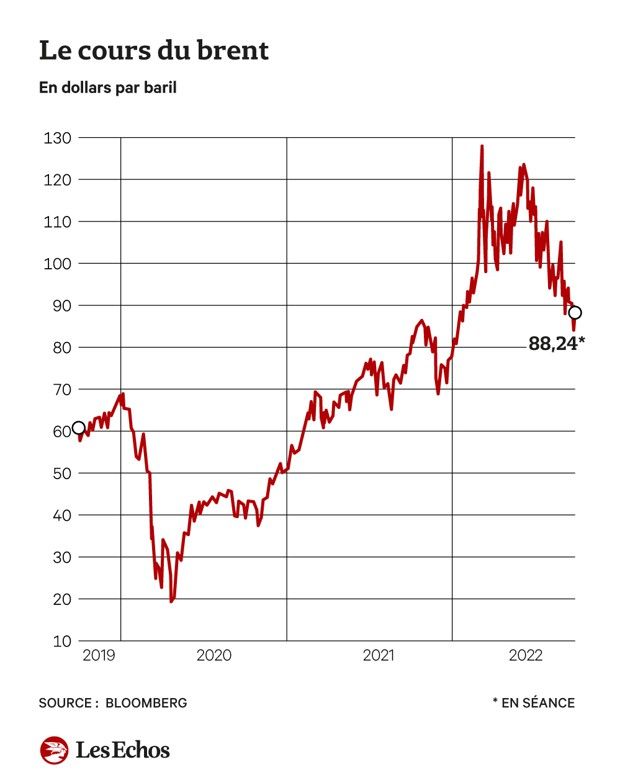Posted Sep 30, 2022 11:45 AMUpdated on Sep 30, 2022 at 11:46 am
Should we fear a return of tensions over oil by the end of the year? In recent days, the closure of facilities in the Gulf of Mexico due to the passage of Hurricane Ian, the decline in American reserves and the surprise rebound in demand for refined products in the United States have sent prices back to the rise.
The price of a barrel of Brent from the North Sea was stable around 89 dollars on Friday morning after having risen more than 2% since the start of the week. The barrel of American West Texas Intermediate (WTI), evolved a little below 82 dollars, also rising again over the week. If this weekly increase were confirmed, it would be the first for oil since the end of August. Leaks on the Nord Stream 1 and Nord Stream 2 gas pipelines have also revived fears about energy security.
Specter of a recession
To hear the professionals of the oil market, the decline – sawtooth – of recent months could well be coming to an end. Oil is on course for its first quarterly decline in more than two years, with prices falling more than 20% since early June. Hit hard by the accelerated monetary tightening of the US Federal Reserve, which raises the specter of a recession, oil has lost more than 35% since its peak in early March.
On Monday, European Brent even fell below 85 dollars a barrel in session, while West Texas Intermediate (WTI), in the United States, was trading below 80 dollars, levels they had not known since the January, before the start of the war in Ukraine.
Decline in Chinese demand
In addition to the gloomy economic outlook, which raises fears of a drop in demand for energy, the Fed’s monetary tightening has propelled the dollar to an all-time high. This has the direct consequence of increasing the cost of black gold for most buyers, since oil sales are made in dollars.
Another phenomenon to have weighed on prices, China, the world’s largest importer of black gold, has seen its needs drop considerably in recent months, thanks to successive reconfinements.
The trend could be reversed by the end of the year. Certainly, “the strength of the US dollar and declining demand forecasts will remain powerful headwinds”, as Goldman Sachs analysts point out. But on the supply side, the lack of investment as well as the weakness of inventories and producers’ reserve capacities should create new tensions.
Goldman Sachs estimates that Brent will average $100 a barrel over the last three months of the year, compared to less than $90 today. And it could probably average $108 in 2023.
European embargo on Russian oil
An analysis shared by the chief economist of the trader Trafigura, which even anticipates new peaks. “We are potentially moving from a world of commodity cycles to a world of commodity peaks due to the underinvestment of the past decade,” Saad Rahim, the trader’s chief economist told Bloomberg. If, for example, the world needed an additional 2 to 3 million barrels per day of oil due to the recovery in China or the United States, producers would have a hard time finding these supplies because there are very few spare capacity, he added.
The approach of the entry into force of the embargo of the European Union on imports of Russian oil on December 5 already raises fears of a drop in supplies. But the volatility and decline in prices of recent weeks could also prompt the Organization of the Petroleum Exporting Countries and its allies, led by Russia, to announce further production cuts at their October 5 meeting.














